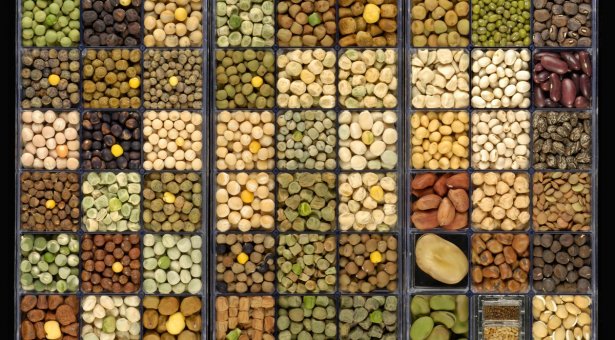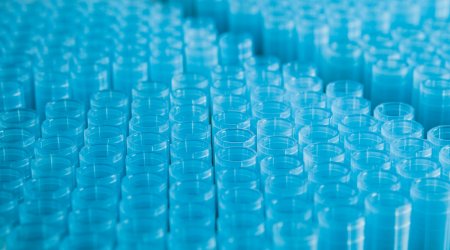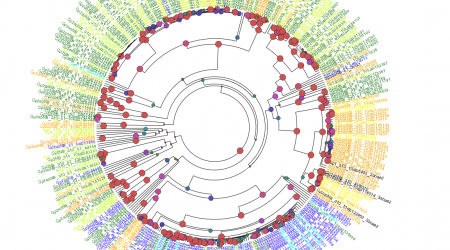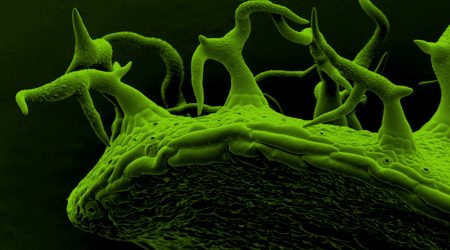Germplasm Resource Unit (GRU)

Browse the GRU public collections and order seeds.
Users are welcome to contact and consult the GRU team about the best choice of germplasm for their project, how to deposit germplasm in the GRU and general aspects relating to cereal and legume seed conservation.
Role
The Germplasm Resources Unit (GRU) at the John Innes Centre houses biological collections of seeds. The GRU aims to capture the broadest possible gene-pool diversity of the UK’s major strategic crops and crop wild relatives, to support plant science and crop improvement through breeding.
We focus on wheat, pea, barley and oat germplasm. The collections include crop wild relatives, traditional landrace, adapted and elite cultivars as well as derived lines, mapping populations and induced (mutagenized) diversity panels.
The seeds are kept in a specialised cool-dry chamber to prolong their longevity and are regenerated according to a 20–30-year cycle plan.
The germplasm-associated data is catalogued in an in-house-tailored management system and public database (SeedStor).
Legacy and History
Some of our seed collections date back to the 1920s, the A.E Watkins collection of Landrace Wheat is an extensively used collection of wheat germplasm dating from this time. The John Innes Pisum global collection has been curated by the John Innes since the 1960s.
Other collections are newer, we continue to expand the diversity of UK major crop germplasm within the GRU. For example, the “Derived Pisum Diversity Panel”, developed by the UK Pulse Crop Genetic Improvement Network, was deposited in 2021.
The cereal collections of Wheat, Barley, Oat and other wild cereals which are housed here, were originally assembled by the Plant Breeding Institute, Cambridge and its predecessors, as well as in the Scottish Crop Research Institute (SCRI). This collection is best suited for UK cereal breeding requirements.
The collections were moved from Trumpington to their current locations in Norwich in 1990. Since, then the GRU with JIC scientists has maintained, catalogued, studied, and promoted the use of these legacy collections.
Since 1990, collections of international importance have been developed (e.g., Pisum mutagenised populations, wheat precise genetic stocks and reverse genetics (TILLING) wheat and brassica populations). Other collections have deposited by national and international crop science consortiums including the Designing Future Wheat Breeder-Toolkit-Collection and GEDIFLUX, Northern European Collection.
Following the UK ratification of the International Treaty for Plant Genetic Resources for Food and Agriculture (ITPGRFA) in 2005, the GRU heritage collections (27,000 accessions) were registered with the ITPGRFA Multilateral System and are distributed under the ITPGRFA terms using the Standard Material Transfer Agreement (S-MTA https://www.fao.org/3/i0520e/i0520e00.pdf).
In 2012, the GRU was designated as a BBSRC National Capability and started a decade of transformation from an internal JIC unit to a modern international crop genebank. The germplasm collections’ associated data catalogues were digitised, and routine processes for stock management, collection rejuvenation and seed distribution were streamlined by a bespoke computerised management system. The SeedStor public database was launched in 2015, automating seed and data requests into the GRU. New functionalities have been continuously added to improve the browsing capabilities and user-friendliness of the online system.
Capitalising on the improved management efficiency, in 2018, a ten-year plan for inventory and activity expansion was laid out in consultation with the user community. A major stocktake and seed quality tests were conducted to update long-term regeneration requirements.
In 2020, the GRU initiated a systematic effort to duplicate the collections for the safety repository in the Global Seed Vault at Svalbard, Norway (read more). To date, the GRU custodianship spans 26 public collections, totalling 52,900 accessions.
Over the last 5 years (2017-22), the GRU distributed more than 27,000 accessions to support over 1700 scientists, breeders, educators and hobby growers from 49 countries. The work was acknowledged by the National Capability Grant reviewer panels as outstanding in 2019 and 2021.
The GRU vision to associate crop conservation with crop genomics is empowering open science and effectively unlocking impact to drive crop improvement through breeding, traditional and precise alike.
The GRU activities are supported by UKRI-BBSRC (Grant number BBS/E/J/000PR8000) and by Defra. To allow sustainable growth in delivery, in 2018 we started to recover some of our costs from germplasm users. For more information about GRU cost recovery policy please see https://www.seedstor.ac.uk/GRU-CostRecovery.php



